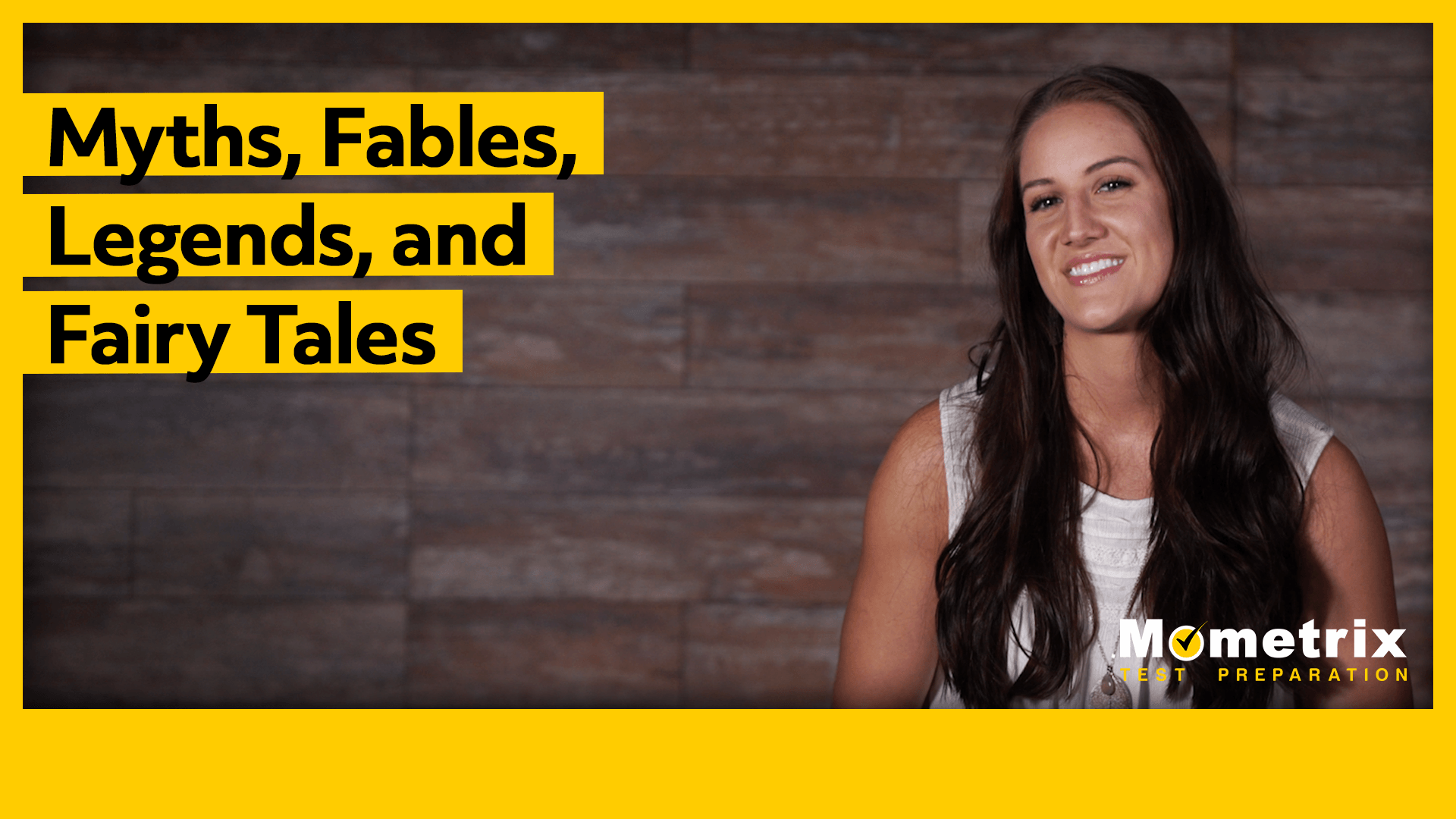
Hi, guys! Welcome to this Mometrix video on myths, fables, legends, and fairy tales.
A lot of you have probably grown up with your parents reading you books or watching movies with you. Well, chances are, most of what they read to you was a myth, fable, legend, or fairy tale.
Let’s look at what makes something a myth, fable, legend, or fairy tale.
Myth
A myth is a story that was made up by people who wanted to explain how or why our world works, how it came to be, how we should treat each other, why hurricanes happen, and so on.
Myths were sort of like our ancient ancestors’ version of science. Myths explained how natural events occurred and are set in really ancient times; before history even began. These myths are generally passed on from parents to kids, and when those kids grew up to be parents, they would tell their kids, and so on. The word myth actually comes from the Greek “mythos” meaning “word of mouth.”
Myths were shared by groups of people all throughout the world and became a really big part of their community. Greek mythology is one of the most popular examples of this. Their myths generally centered around various gods and goddesses. Sometimes days were even set apart to have big celebrations because of these myths.
Legend
Legends are stories that people made up as well. However, legends are about real-life people and what they did. Legends always have an important purpose, but the facts are always a little exaggerated to make them more interesting and exciting! Generally, some of the facts are dramatically altered and the person the legend is about never really did what the story says.
Fable
Now, a fable is also a story that is passed down. A fable’s overall purpose is to teach a lesson. However, all the characters in a fable are things that can’t normally talk. A fable is about animals, plants, or forces of nature that can talk and act like humans.
Fairy Tale
Fairy tales are probably one of the most popular today. Fairy tales are specifically for kids and often have a lot to do with magic (like a fairy godmother, elves, or any supernatural character). Animals can also be characters in a fairy tale. Fairy tales always have good characters and evil characters. A lot of times fairy tales begin by saying “once upon a time.”
Review
So let’s do a quick review:
- Myths are stories that are passed down about how or why something came to be.
- Legends are designed to teach a lesson about a real person in history, with a few facts dramatically changed.
- Fables are stories that are passed down, with a good lesson to be learned, and are about animals, plants, or forces of nature that are humanlike.
- Fairy tales are stories that are specifically for kids, involve magical characters, have good and evil characters, and generally start with “once upon a time.”
As you do your reading practice, try to find out what type of story it is. See you next time!
Frequently Asked Questions
Q
What is a myth?
A
A myth is a traditional story or legend, generally about the ancient history of a population of people. A myth includes supernatural events and characters. A great example of myths are the Greek myths that tell legendary stories of ancient heroes, cities, and historic events.
Q
What is one distinguishing characteristic of a myth?
A
Myths can often be distinguished by their tales of how the world began.
Q
What is a fable?
A
A fable is a fictional story that features animals, legends, inanimate objects, or forces of nature that become anthropomorphized. To anthropomorphize means to give human characteristics or behaviors to animals, a god, or objects.
Q
What is a legend?
A
A genre of folklore that is generally a narrative written to teach life lessons about historic characters, with some factual evidence changed.
Q
What is the difference between myths, legends, and fables?
A
A myth is a traditional story or legend, generally about the ancient history of a population of people. A myth includes supernatural events and characters. Legends often teach lessons about factual historical characters. Fables are stories passed down from generation to generation in order to teach a good lesson for readers. Fables differ by writing characters about fictional animal characters, illustrious legends, life-like inanimate objects, or forces of nature that become anthropomorphized.

